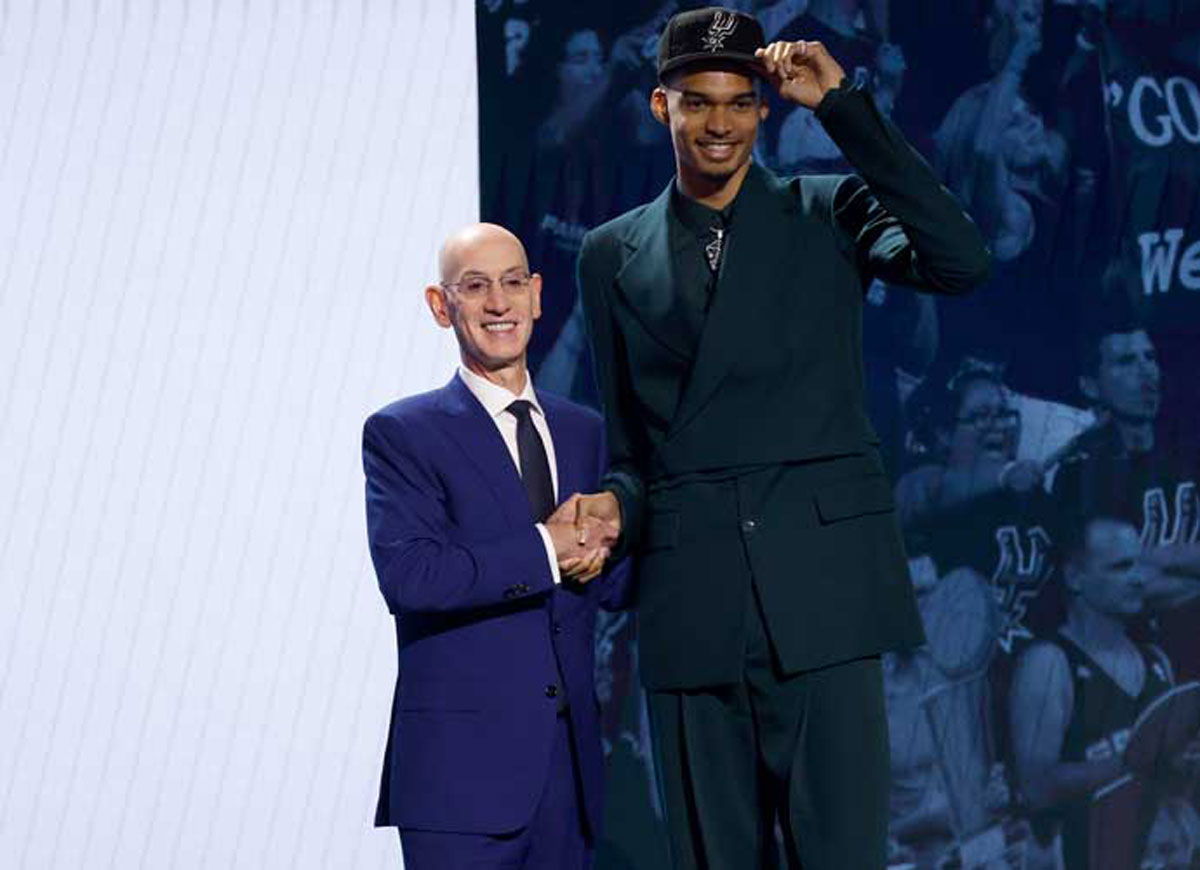The Event

3/5
If I didn’t know better, I would bet the farm that television’s recent hit shows, Lost and 24, engaged in a spastic, ill-defined affair to produce an heir that would carry out their legacy and continue to nourish the ravenous demographic that has come to depend on their antics. In their infinite wisdom, they called this offspring The Event, and thereby secured the future of the “conspiracy theory” genre. Whether The Event will go on to do great things or suffer quietly under the shadow of its well-intentioned predecessors remains to be seen. The new hopeful NBC flagship show, which premiered September 20, is still in its infancy, and therefore deserves the benefit of the doubt.
The Event surrounds what can only be described as—you guessed it—a government conspiracy that goes higher than the President of the United States (played by the understated Blair Underwood), a kindhearted man whose family tree stems from communist Cuba. Early on in real time, but later in the episode (so much of this story is told in flashbacks from various time frames and various perspectives that it will undoubtedly become disorienting unless the directors tone it down), President Elias Martinez uncovers a secret that National Security Director Blake Sterling, and Vice President Raymond Jarvis (portrayed by the promising Zeljko Ivanek and Bill Smitrovich, respectively) would rather keep under wraps. It involves a top-secret government site in Alaska where 97 prisoners are detained for reasons undisclosed. We can only surmise that these hapless detainees know something they shouldn’t. Martinez takes steps to release the prisoners and publicly reveal the circumstances behind their incarceration, calling a press conference despite stern warnings from the creepy Sterling.
Of course, someone has tipped off the president. While the source is never revealed, we are led to believe that the mysterious Simon Lee (Ian Anthony Dale), a close confident to insider and leader Sophia Maguire (ER’s Laura Innes) at the Alaskan compound, leaked the damning information, setting off a convoluted series of events that establishes the show’s structure and plot—one that involves the highest members of the American government and trickles down to affect the lives of unsuspecting nobodies Sean Walker (Jason Ritter) and Leila Buchanan (Sarah Roemer).
These starry-eyed lovers provide the heart and human element of the show, reminding us that actual lives are affected by paperwork signed in the Oval Office. Sean (the established hero of the show, if there can be one in such a large ensemble cast) is taking his girlfriend Leila on a Caribbean cruise—something they always meant to do but never found the time—where he intends to propose to her. When he attempts to pop the question on the breathtaking cliffs overlooking the water, the piercing screams of a drowning woman interrupt him. Sean rushes to the rescue in time to save the girl, who, along with her boyfriend, turns out to have a curious interest in keeping the other couple close. No sooner have Sean and Leila been bamboozled by the energetic, meddling duo than Leila suddenly goes missing, and all evidence of her and Sean’s registration on the cruise disappears.
Flash to Leila’s parents’ house, where her mother is being gunned down by mysterious assassins dressed in black. Now flash to AviasAir Flight 514, where a frantic Sean wields a gun at a hysterical flight attendant and a federal air marshal, demanding to speak to the pilot. He bangs on the cockpit door, insisting that “Mike” turn the plane around because “it’s not too late,” and “she” wouldn’t want him to do this. It turns out that the plane is being piloted by Leila’s father, Michael Buchanan (Scott Patterson of Gilmore Girls fame), whose daughter is apparently being held hostage until he pulls off a Kamikaze mission and crashes the plane into the very press conference that President Martinez is preparing to hold on the topic of the released Alaskan detainees. There you have it—full circle.
Now imagine that each scene described above (plus, say 10 more we haven’t time to explore) is written out in detail on a separate piece of paper, each of which is then folded in quarters and dropped into a bowler hat. Now picture that hat being gently shaken and each folded piece of paper being pulled out, one by one, unfolded, and lined up in the order in which it was removed. I think that’s how they decided to tell the story. They just figured it would be easy to iron out problems with continuity by informing the viewers when each scene actually took place in relation to the one directly before it. Hence, each segment must begin by anchoring us in the setting—“13 MONTHS EARLIER,” “EIGHT DAYS EARLIER,” “23 MINUTES EARLIER THAN EIGHT DAYS BEFORE THE SCENE THAT WAS 13 MONTHS BEFORE THE PRESENT TIME, WHICH MAY HAVE SOMETHNG TO DO WITH THE EVENT.”
Okay, so the last one isn’t real, but you get it.
Of course, it is important to emphasize that there is only so much you can expect from a pilot. While the flashbacks are excessive, I understand that the writers are trying to get as much information out there as possible to snag their potential viewers, so they can’t be bothered with writing silly linear transitions. We will overlook it for now, but if it doesn’t work itself out, it’s going to end up inciting ridicule and alienating viewers.
The same goes for the characters’ lack of dimension. At this point, Sean is by far the most fleshed out, and even he is a bit flat. There are so many characters in The Event that it may prove challenging to make each of them rich and important in his or her own right, but it is certainly not impossible. The show could take some notes from its forerunner, Lost, which showed uncharacteristic strength in keeping its characters lively, interesting, and realistic from the start.
The Event shows nice potential, but could go either way. It needs to be bold and proactive in finding its own legs so it can quickly brush off comparison with previous iconic programs in the genre. If you can get past the flashbacks, the writing is relatively strong and the plot is both engaging and accessible. One walks away actually wanting to know what happens next, which is no easy task in itself. The acting is respectable, and there is nothing unlikable about the characters—I just hope to be given a chance to get to know them. I also hope to eventually find out what the “event” actually is.
RELATED ARTICLES
Get the most-revealing celebrity conversations with the uInterview podcast!





Leave a comment